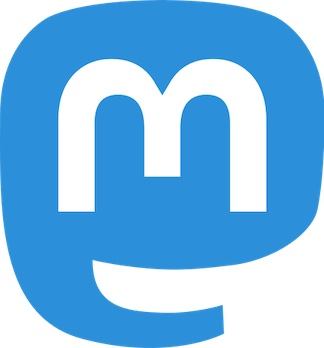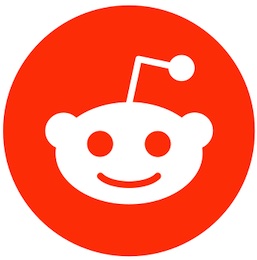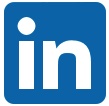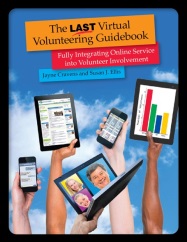What Impact Online Is All About
Impact Online is a 501(c)(3), nonprofit corporation based in Palo
Alto, California, and opening an office in the Washington, D.C. area
this summer (1996). Our mission is to facilitate and increase
community involvement. Using technology, Impact Online has become a
vehicle for turning good intentions into action. We are a
collaborative organization that seeks to complement existing
services and build on community resources to get more people
involved.
We all want to leave the world a little better than we found it. But
having lives and jobs that keep us busy most of the time, we try to
find ways to participate in the activities of organizations that are
already addressing the social problems that concern us the most. And
then, even before we actually do any of the good work, it may take a
lot of effort to make the connections. For a lot of people this is a
major barrier to participation.
The people who started Impact Online saw the potential of the
Internet to revolutionize the way people became involved in social
causes. The World Wide Web can be a conduit for quick, easy access
to both issue information and information about organizations who
need volunteers. So, at Impact Online we are creating a meeting
ground in cyberspace for PEOPLE with the desire to make a
difference, and ORGANIZATIONS that are coordinating action to change
our world for the better.
We are here to help PEOPLE to use the Internet to transform their
good intentions into actions.
We are also interested in encouraging nonprofit and social change
ORGANIZATIONS to make use of the Web for getting their message out
and recruiting volunteers. The Internet can be a cost-effective and
useful tool. And in this information age, it is imperative that
organizations be able to leverage new technologies to their
advantage.
Once Upon A Time?
Impact Online was founded in 1994 because of a market need -- there
are many individuals that have good intentions to get involved with
their community but it needs to be easier. There is a large and
growing population of people online. In 1994 there was little or no
information about nonprofits online for those people that wanted to
get involved.
Using Internet technology to facilitate and increase community
involvement was the idea behind Impact Online. For the inside story
about how we got started, read our story as told by Steve Glikbarg,
Co-founder of Impact Online:
. . . A woman leaving work encounters yet another homeless person on
the way to the train station. On the train home, she ponders her own
lack of response to this problem and her growing immunity to the
street requests. That night at home, she signs onto the Web and goes
to Impact Online. First she learns the basics about Homelessness.
But she still has a couple of questions -- and so she sends an
e-mail to "Ask Impact Online," an e-mail "question and answer" that
is being answered this month by Innovative Housing.
She then goes to the online directory and finds a list of major
national and state organizations that are working on the
homelessness issue. There are links to many other home pages. A
search of the San Francisco Bay Area yields numerous agencies and
shelters -- one currently has a major initiative underway to expand
its services in the city. She looks at an online picture of the site
for the new shelter, and hears the shelter manager describe the
plans. She decides to e-mail the manager with an offer to help in
some way. She also notices that a few of the agencies offer products
for sale, and decides to order her Christmas cards, designed and
printed by the formerly homeless, while she is online. She feels
compelled to get involved and make a difference, and Impact Online
enables her to do just that.
Pure fantasy? Not anymore. Last Fall, all this was the vision of
four MBA's interested in how the "information superhighway" could
help make it easier for individuals to become more involved with
local nonprofits. Working together, Mark Benning (MBA '94), Joanne
Ernst (MBA '94), Cindy Shove (MBA University of Toronto) and I (PMP
'94) created a business plan for starting a new kind of nonprofit --
one that would operate entirely online to promote community
involvement.
Just one short year ago, the vision looked pretty outlandish. Being
well-trained MBA alumni, we diligently developed a business plan,
made financial statements three years into the future, extrapolated
the rapid growth of the Internet and explained how this new medium
could revolutionize community involvement. But we were early and few
people seemed to grasp the potential.
At first the main problem was that no one had heard of the World
Wide Web (WWW). At the time we wrote our business plan Netscape
hadn't made its first browser yet, none of the commercial services
offered access to the Web and, more importantly, businesses and the
media hadn't yet discovered the Internet. After explaining e-mail,
the Internet, the World Wide Web and hypertext links in all our
proposals, charitable foundations assumed we were looking to fund a
technology project (something few do) instead of funding a community
outreach project (which many do fund). In hindsight, we were just
early and operating like entrepreneurs who act quickly when they see
an opportunity.
We could have waited to get funding. Maybe we should have, but my
guess is that we would still be waiting. When Edison invented the
telephone and offered it to Western Union, they responded, "This
'telephone' has too many shortcomings to be seriously considered as
a means of communication. The device is inherently of no value to
us." (Western Union internal memo, 1876.) Getting an innovative
project funded has always had its challenges.
Now, a year later, we can show potential funders that the concept
works. For example, a recent survey showed that over 75% of those
online say they would do more community service if volunteer
information was available online.
Today, Impact Online operates an award-winning Web site boasting
information on volunteer opportunities from around the country,
in-depth profiles of organizations such as the Points of Light
Foundation and California Commission on National Service and links
to nonprofits around the world. In addition, Impact Online's Web
site features information on such social issues as homelessness and
public education and a course for nonprofits interested in using
online technology for social change. By the Fall of 1995, more than
30,000 people had visited Impact Online registering in excess of
300,000 hits (page views). Funders include Applied Materials,
Hewlett-Packard, Intel, National Semiconductor and the Roberts
Foundation.
While proving the concept of Impact Online through the creation of a
Web site has worked to raise interest among funders and the public,
Cindy Shove and I devoted nearly all of 1995 to working on the
project without pay. Was it worth it? If someone had told me how
much work it would take to get this project off the ground, I might
have had second thoughts. The lure of funding, which always seemed
just around the corner, kept us going month by month. Moving Impact
Online from my home to a cubicle in shared office space, Cindy Shove
and I have gone through all the pain of a true startup. With clients
around the country, a rapidly changing industry and a new product,
we've been using all our MBA skills to the hilt. Marketing our
organization nationally, developing a focused service and responding
to clients -- all while keeping costs to a minimum -- has meant
relying heavily on the core concepts we learned at business school.
Impact Online is a real bootstrap operation where the return on
equity is the social capital created when new sources of creativity
and energy are used to support social change. While Impact Online is
still seeking a major investor, the word on the street is that our
product is hot and the need is real.
In the last few months, Impact Online has grown tremendously. We've
hired a fulltime Webmaster, established a national board of
directors and opened up a second office in the Washington, D.C.
area. While the road ahead has many challenges, looking back, I'm
proud at how far we've gotten in such a short time.
-- Steve Glikbarg
The archived version of the Impact Online web site, said "Using Internet
technology to facilitate and increase community involvement was the idea
behind Impact Online." As noted above, Impact Online was founded by four
MBA students:
Steve
Glikbarg,
Cindy
Shove,
Mark Benning and
Joanne
Ernst. Impact Online, and particularly
Steve
Glikbarg, deserve a lot of credit for getting nonprofit
organizations in the USA online, particularly on the West Coast, both
through the web site and through the founders' many meetings with and
events for nonprofit organizations in the San Francisco Bay Area. They
also deserve credit for something else: in 1996, Impact Online secured
funding for what became
The Virtual
Volunteering Project.
More about Impact Online
Quick Links
 my home
page
my home
page
 my
consulting services & my workshops
& presentations
my
consulting services & my workshops
& presentations
 my
credentials & expertise
my
credentials & expertise
 Affirmation that this web site is
created & managed by a human.
Affirmation that this web site is
created & managed by a human.
 My book: The
Last Virtual
Volunteering Guidebook
My book: The
Last Virtual
Volunteering Guidebook
 contact me
or see my
schedule
contact me
or see my
schedule
 Free Resources: Community Outreach, With & Without Tech
Free Resources: Community Outreach, With & Without Tech
 Free Resources: On
Community Engagement, Volunteering & Volunteerism
Free Resources: On
Community Engagement, Volunteering & Volunteerism
 Free Resources: Technology
Tips for Non-Techies
Free Resources: Technology
Tips for Non-Techies
 Free Resources:
Nonprofit, NGO & other mission-based management resources
Free Resources:
Nonprofit, NGO & other mission-based management resources
 Free Resources: Web
Development, Maintenance, Marketing for non-Web designers
Free Resources: Web
Development, Maintenance, Marketing for non-Web designers
 Free Resources: Corporate
philanthropy / social responsibility programs
Free Resources: Corporate
philanthropy / social responsibility programs
 Free Resources: For people
& groups that want to volunteer
Free Resources: For people
& groups that want to volunteer
 linking to
or from my web site
linking to
or from my web site
 The
Coyote Helps Foundation
The
Coyote Helps Foundation
 me on
social media (follow me, like me, put me in a circle,
subscribe to my newsletter)
me on
social media (follow me, like me, put me in a circle,
subscribe to my newsletter)
 how to
support my work
how to
support my work
To know when I have developed a new
resource related to the above subjects, found a great
resource by someone else, published
a
new blog,
uploaded a new
video,
or to when & where I'm training or presenting, use any
of the following social media apps to follow me on any of
these social media platforms:






Disclaimer: No guarantee of accuracy or suitability is made by
the poster/distributor of the materials on this web site.
This material is provided as is, with no expressed or implied
warranty or liability.
See my web site's privacy
policy.
Permission is granted to copy, present and/or distribute a limited
amount of material from my web site without charge if
the information is kept intact and without alteration, and is
credited to:

Otherwise, please contact me
for permission to reprint, present or distribute these materials
(for instance, in a class or book or online event for which you
intend to charge).
The art work and material on
this site was created and is copyrighted 1996-2025
by Jayne Cravens, all rights reserved
(unless noted otherwise, or the art comes from a link to
another web site).


 The
Last Virtual Volunteering
Guidebook
The
Last Virtual Volunteering
Guidebook  my home
page
my home
page my
consulting services & my workshops
& presentations
my
consulting services & my workshops
& presentations my
credentials & expertise
my
credentials & expertise Affirmation that this web site is
created & managed by a human.
Affirmation that this web site is
created & managed by a human. My book: The
Last Virtual
Volunteering Guidebook
My book: The
Last Virtual
Volunteering Guidebook contact me
or see my
schedule
contact me
or see my
schedule Free Resources: Community Outreach, With & Without Tech
Free Resources: Community Outreach, With & Without Tech Free Resources: On
Community Engagement, Volunteering & Volunteerism
Free Resources: On
Community Engagement, Volunteering & Volunteerism Free Resources: Technology
Tips for Non-Techies
Free Resources: Technology
Tips for Non-Techies Free Resources:
Nonprofit, NGO & other mission-based management resources
Free Resources:
Nonprofit, NGO & other mission-based management resources Free Resources: Web
Development, Maintenance, Marketing for non-Web designers
Free Resources: Web
Development, Maintenance, Marketing for non-Web designers Free Resources: Corporate
philanthropy / social responsibility programs
Free Resources: Corporate
philanthropy / social responsibility programs Free Resources: For people
& groups that want to volunteer
Free Resources: For people
& groups that want to volunteer linking to
or from my web site
linking to
or from my web site The
Coyote Helps Foundation
The
Coyote Helps Foundation me on
social media (follow me, like me, put me in a circle,
subscribe to my newsletter)
me on
social media (follow me, like me, put me in a circle,
subscribe to my newsletter)